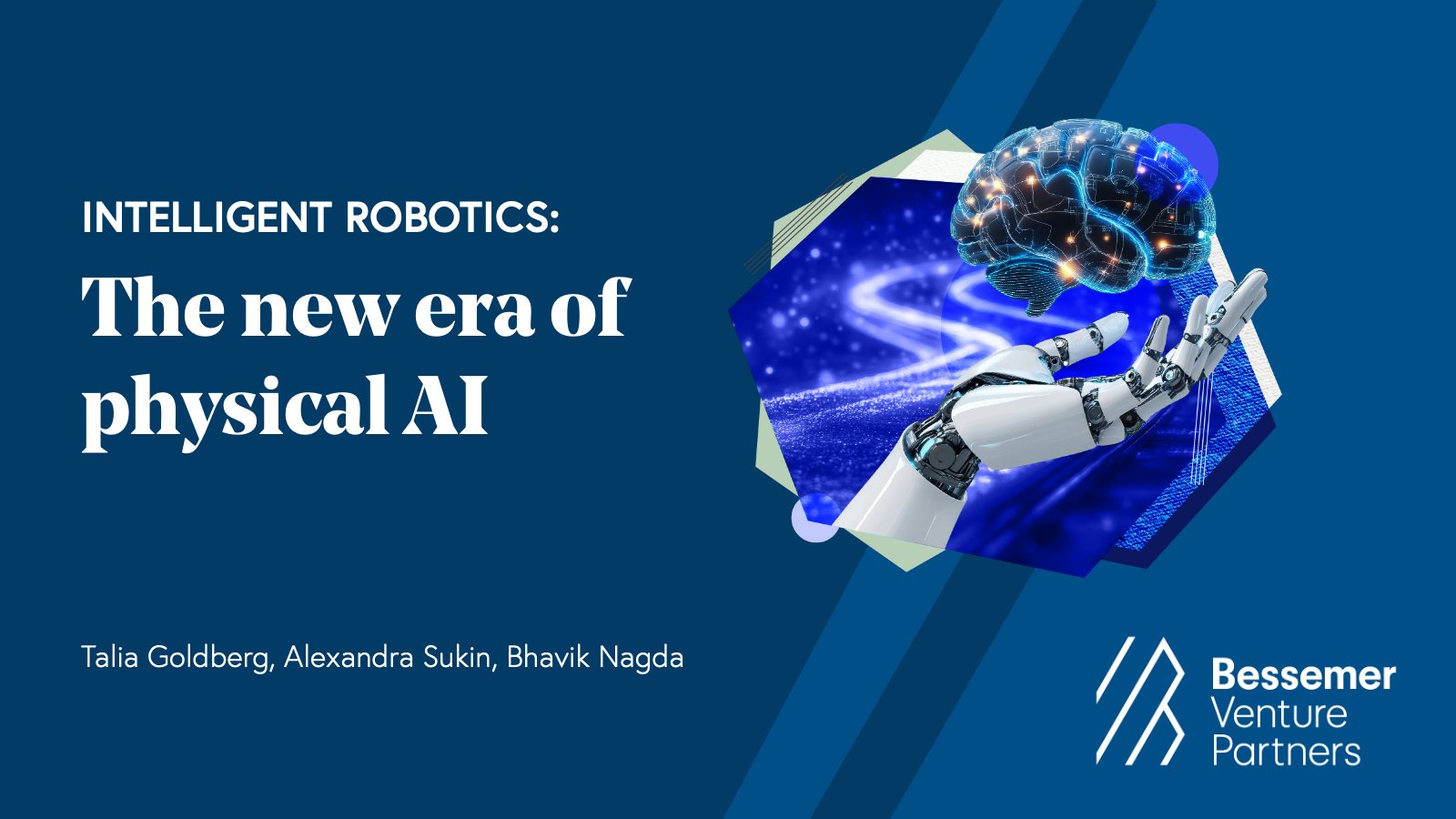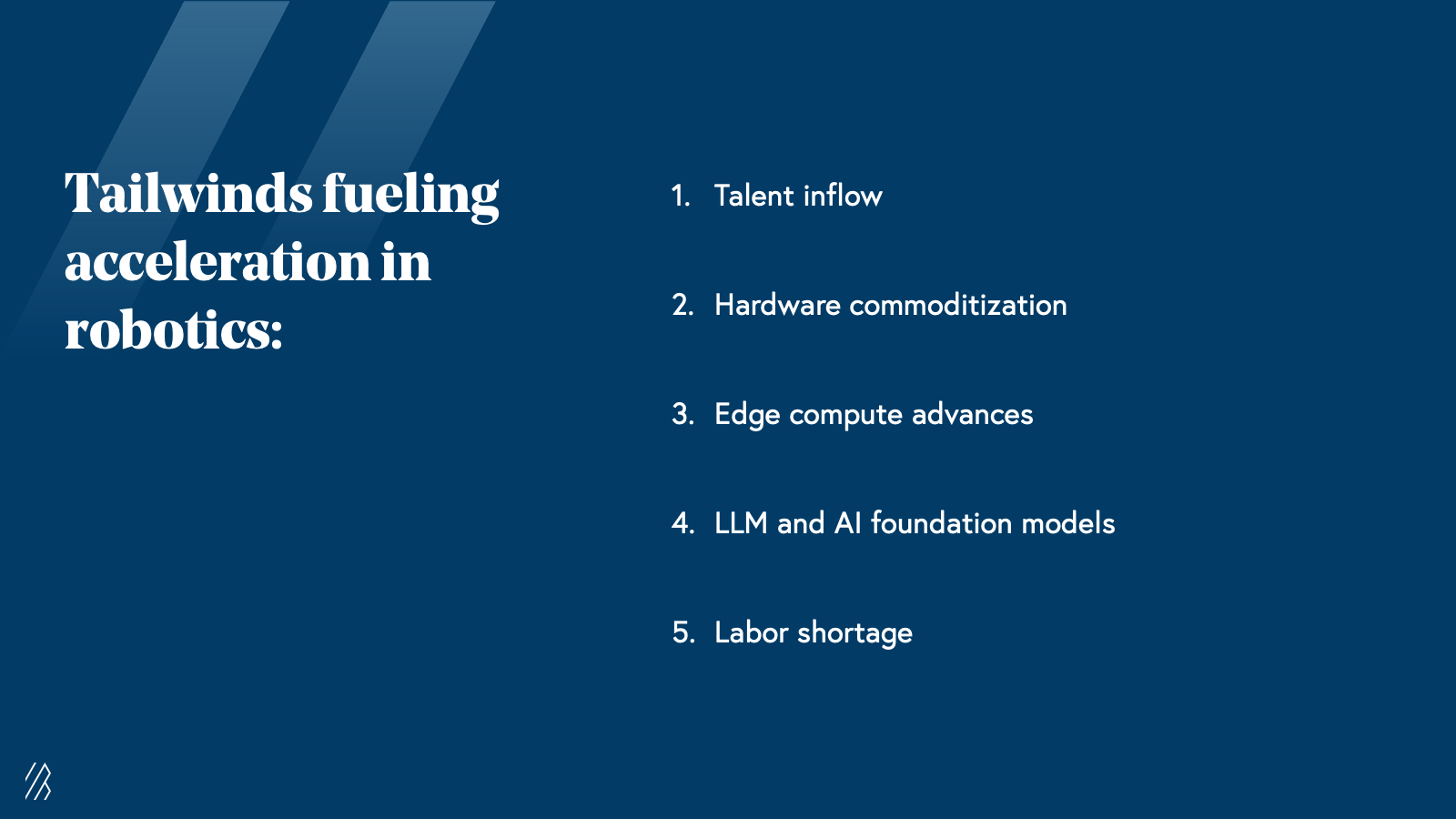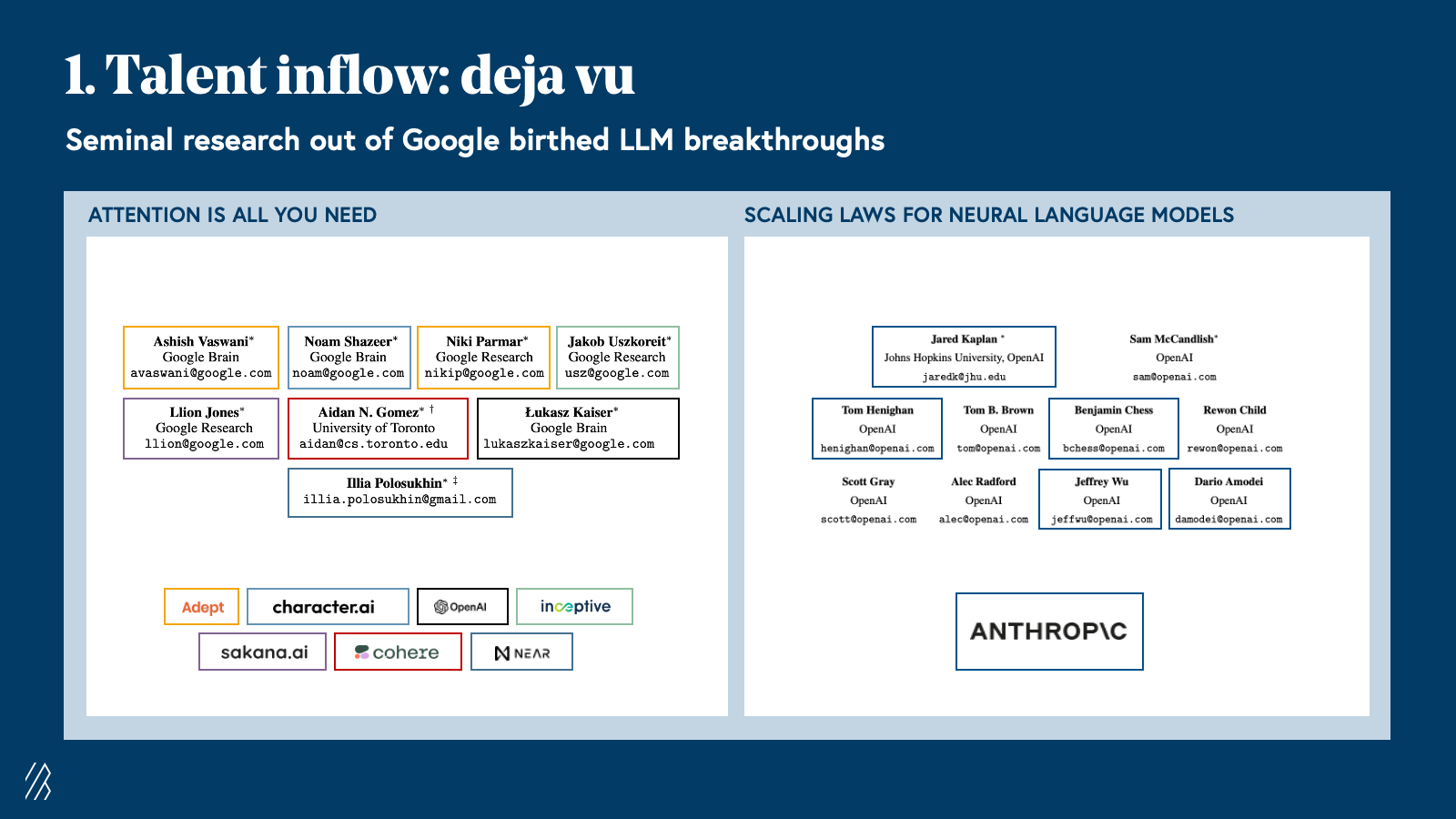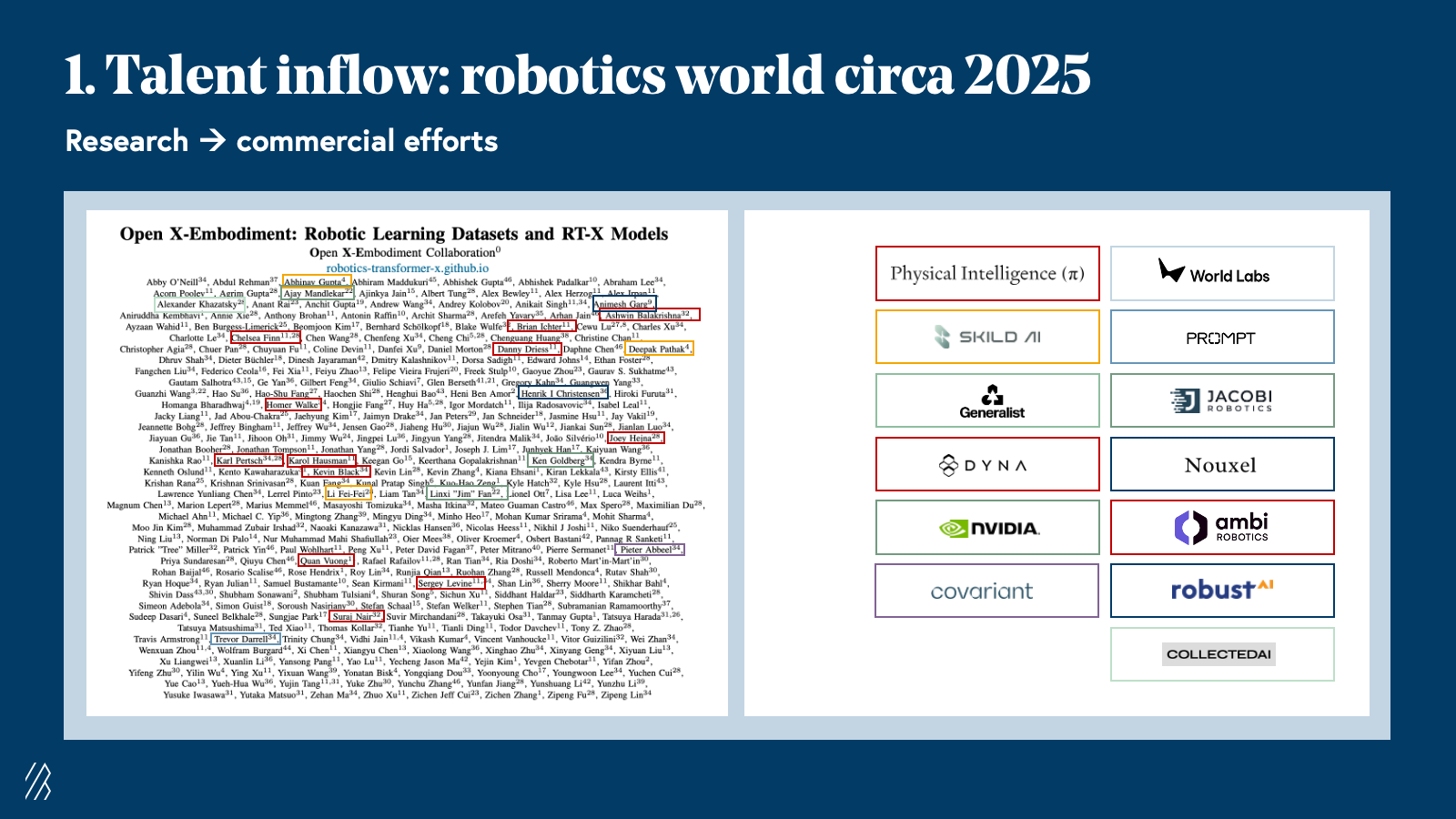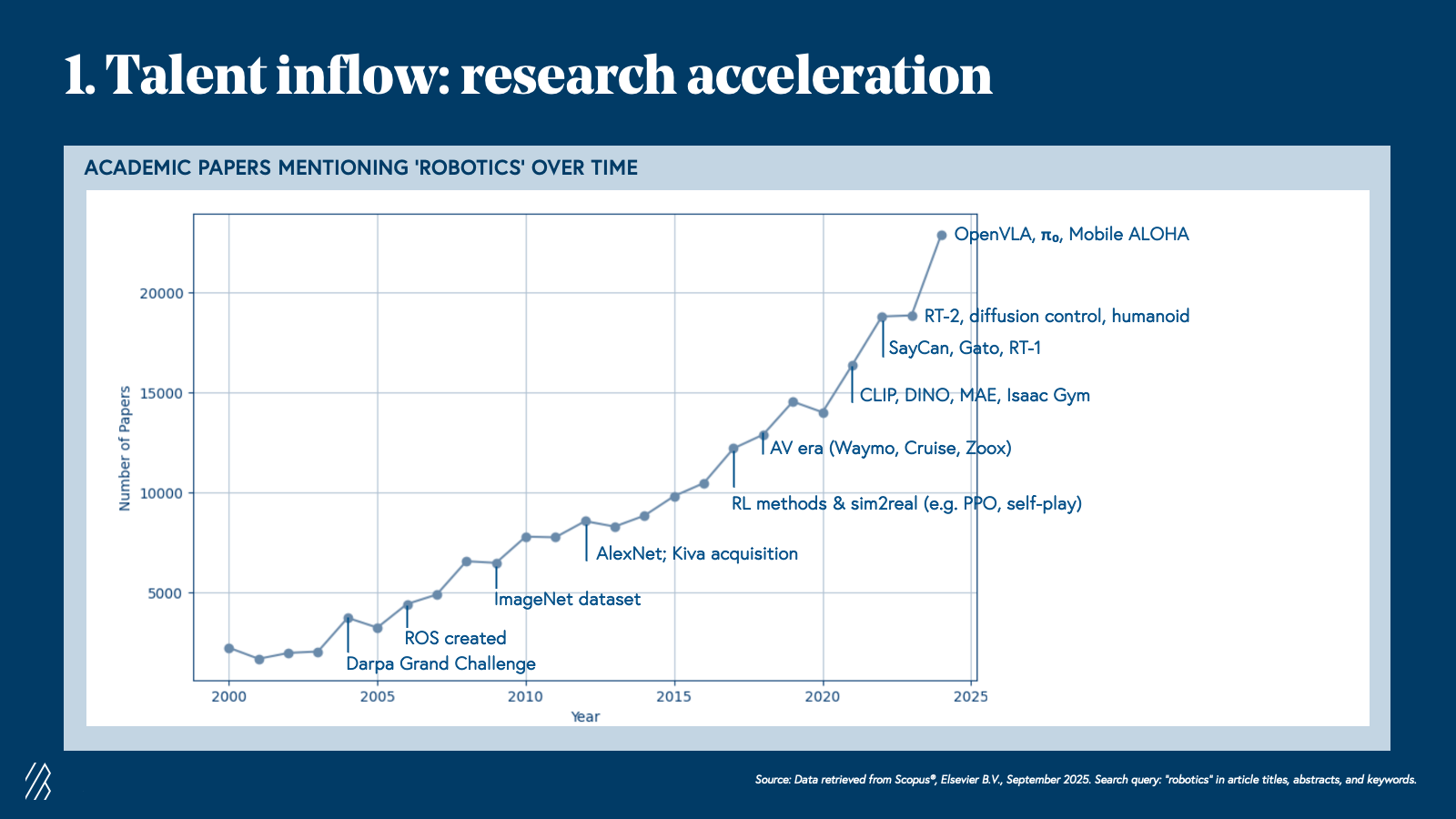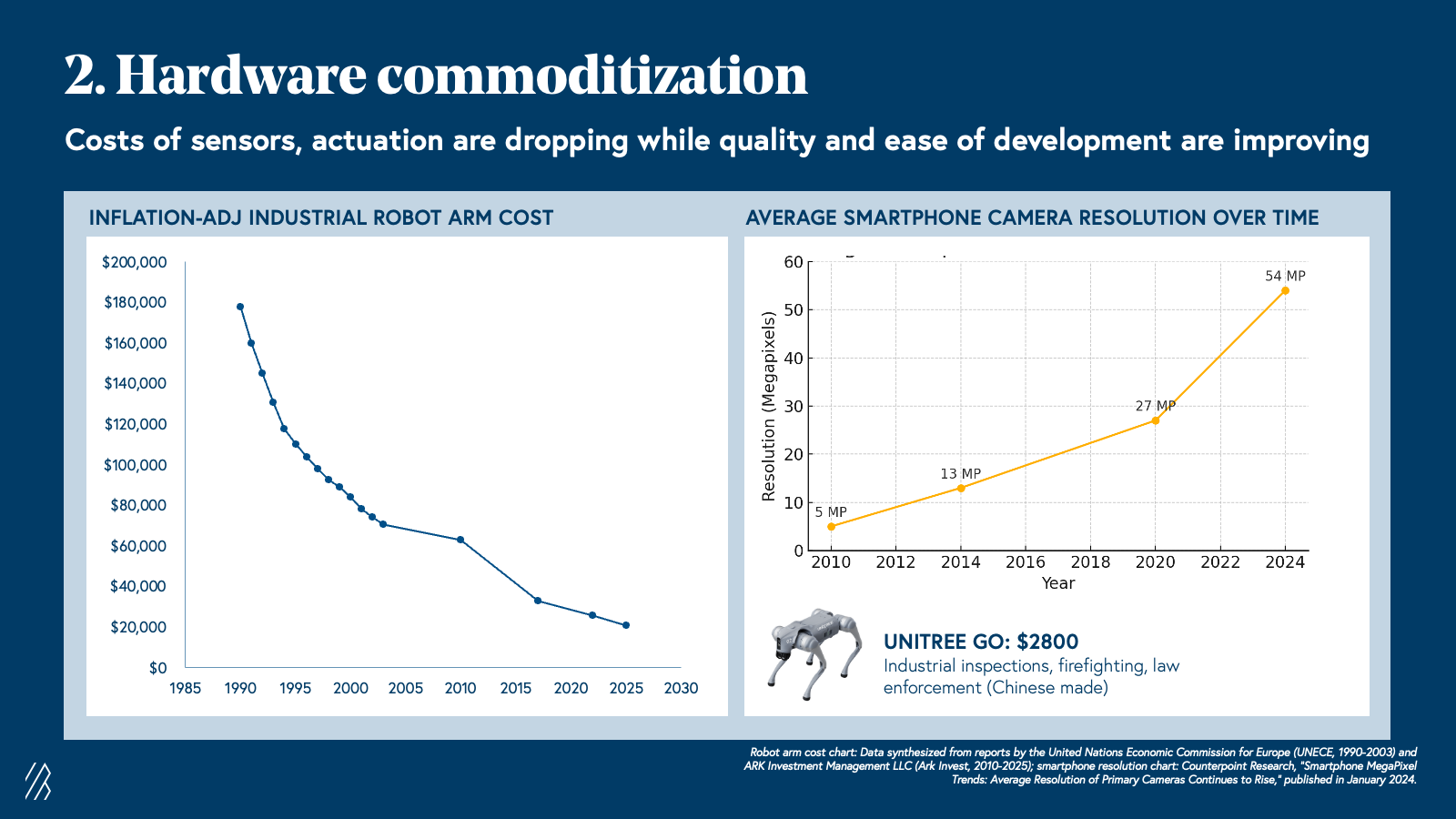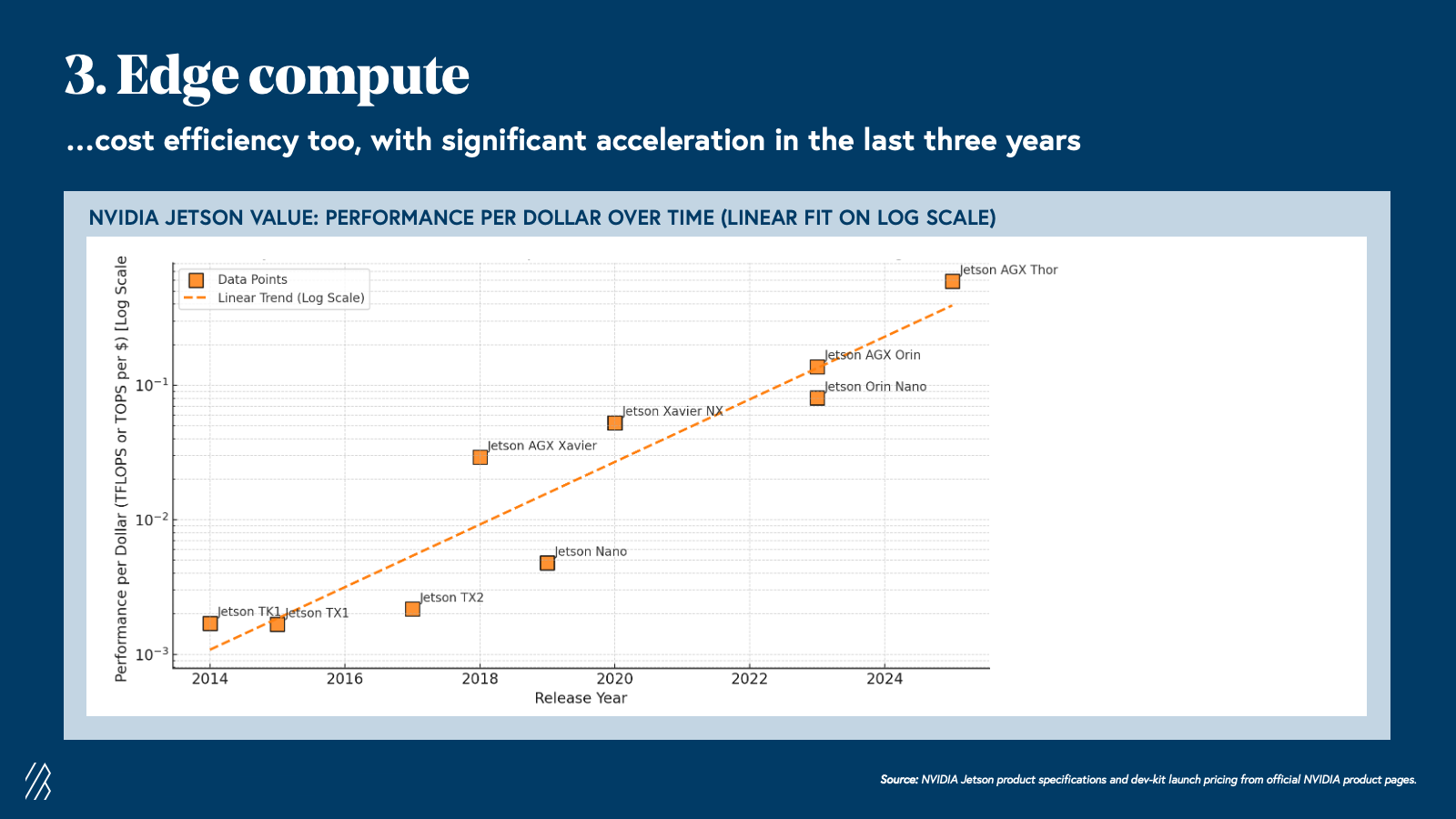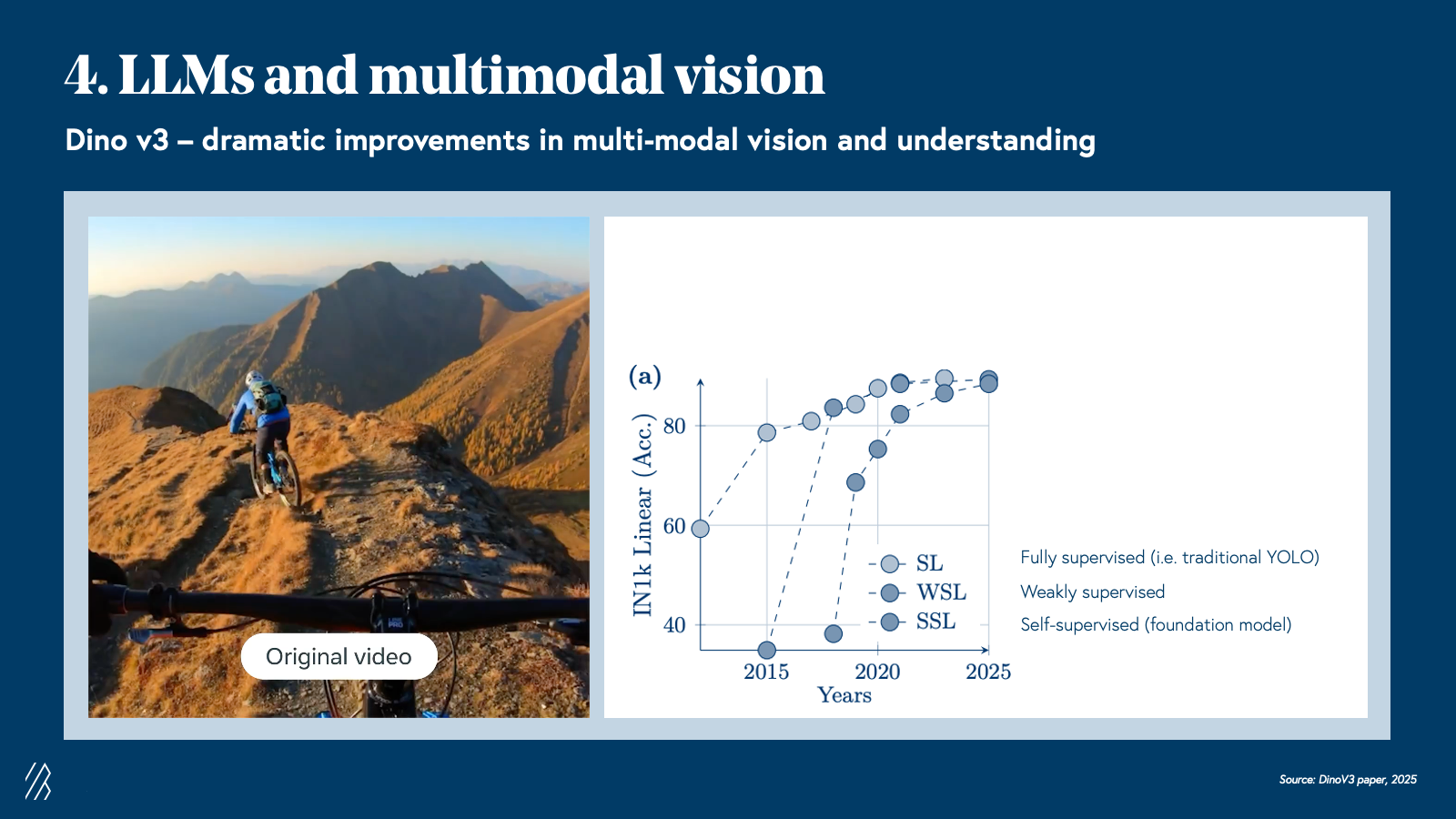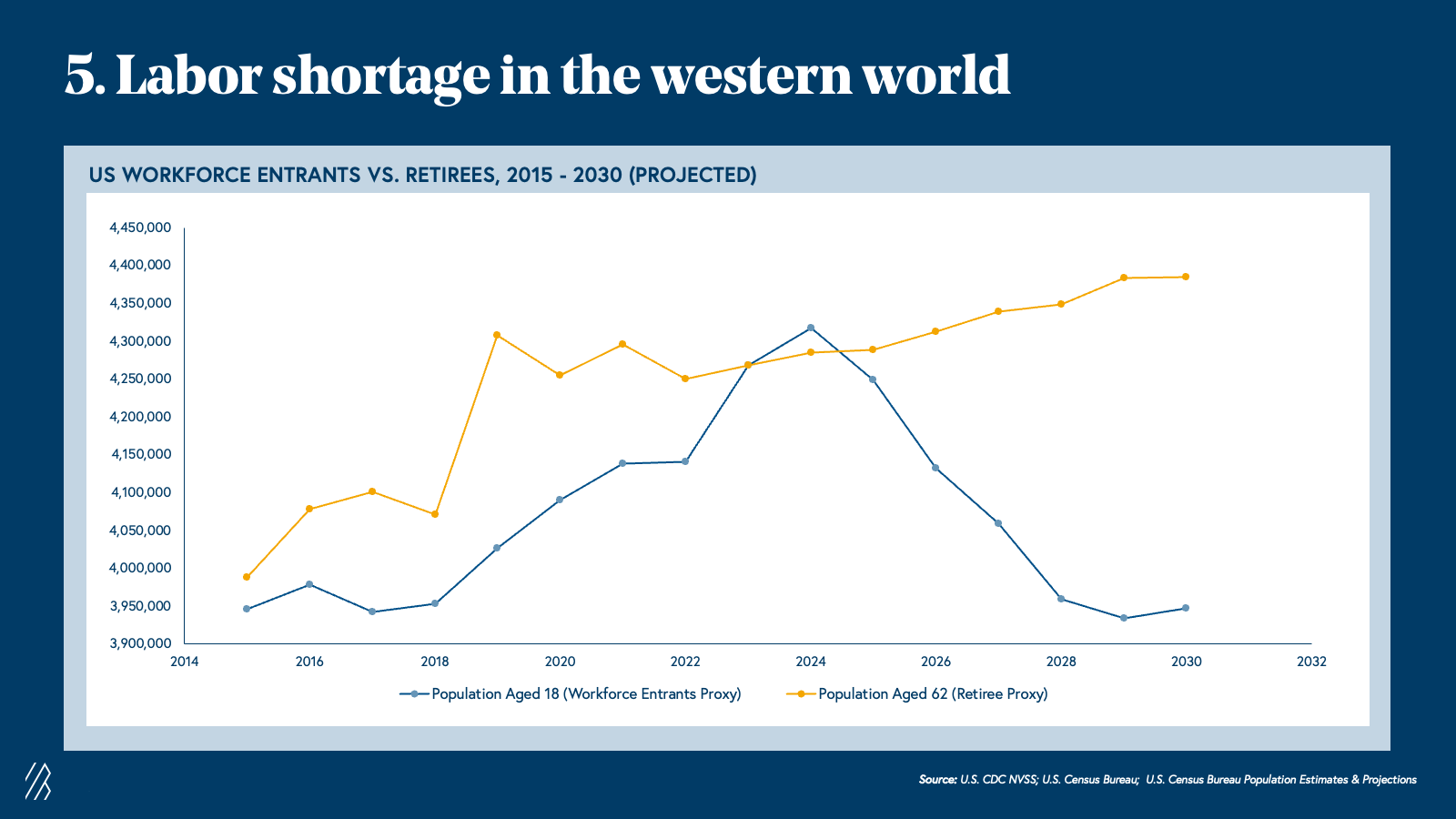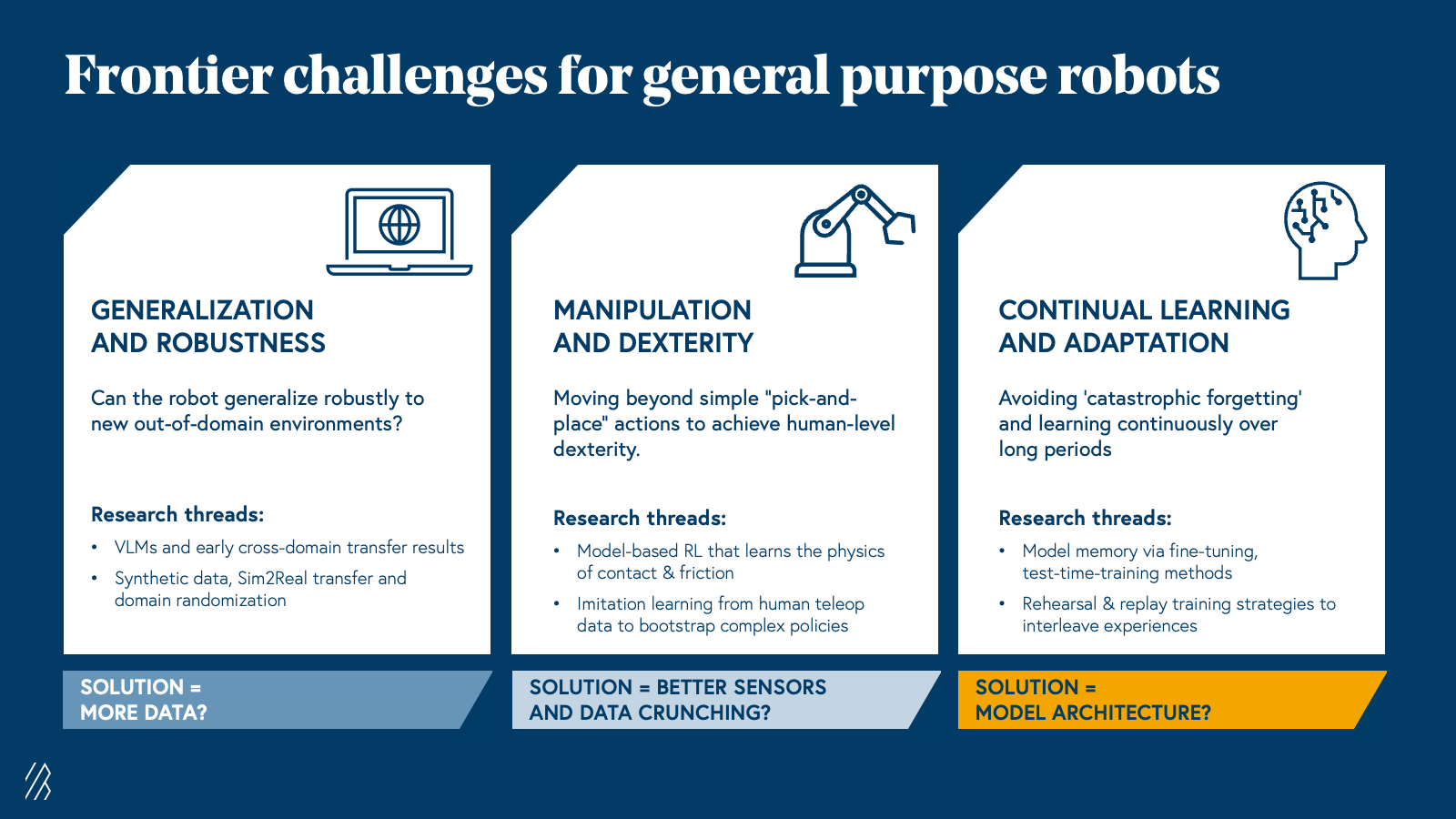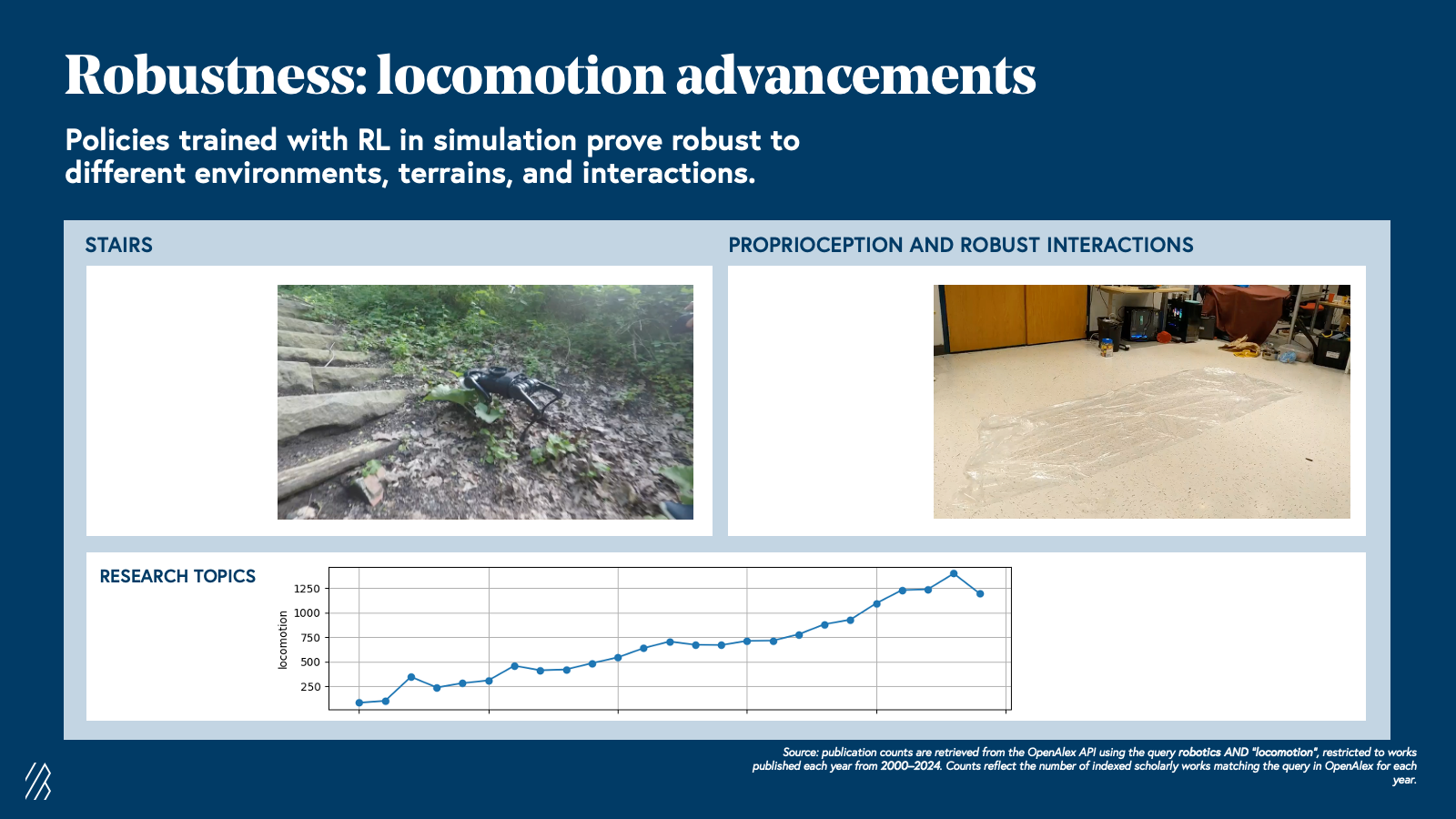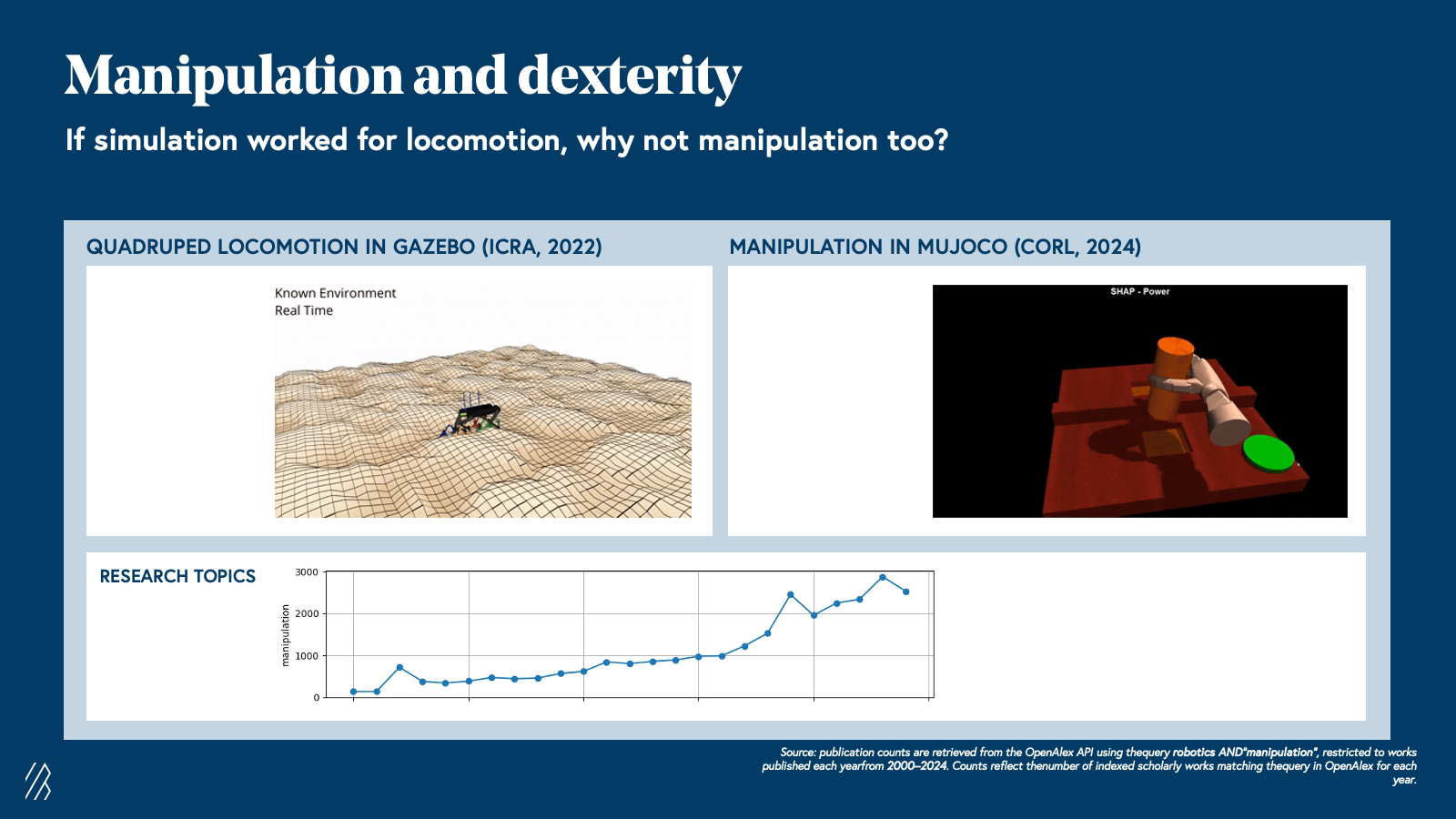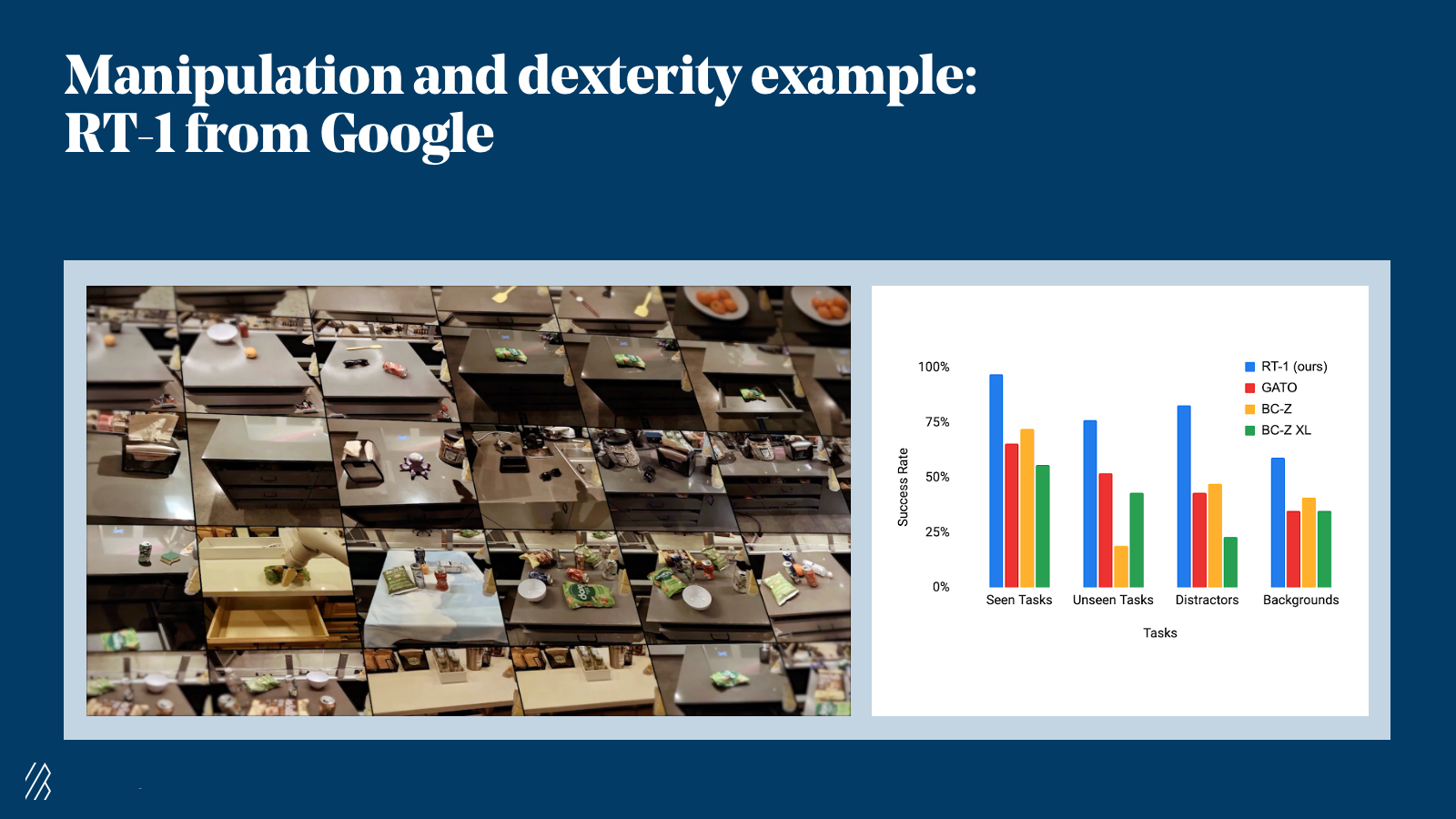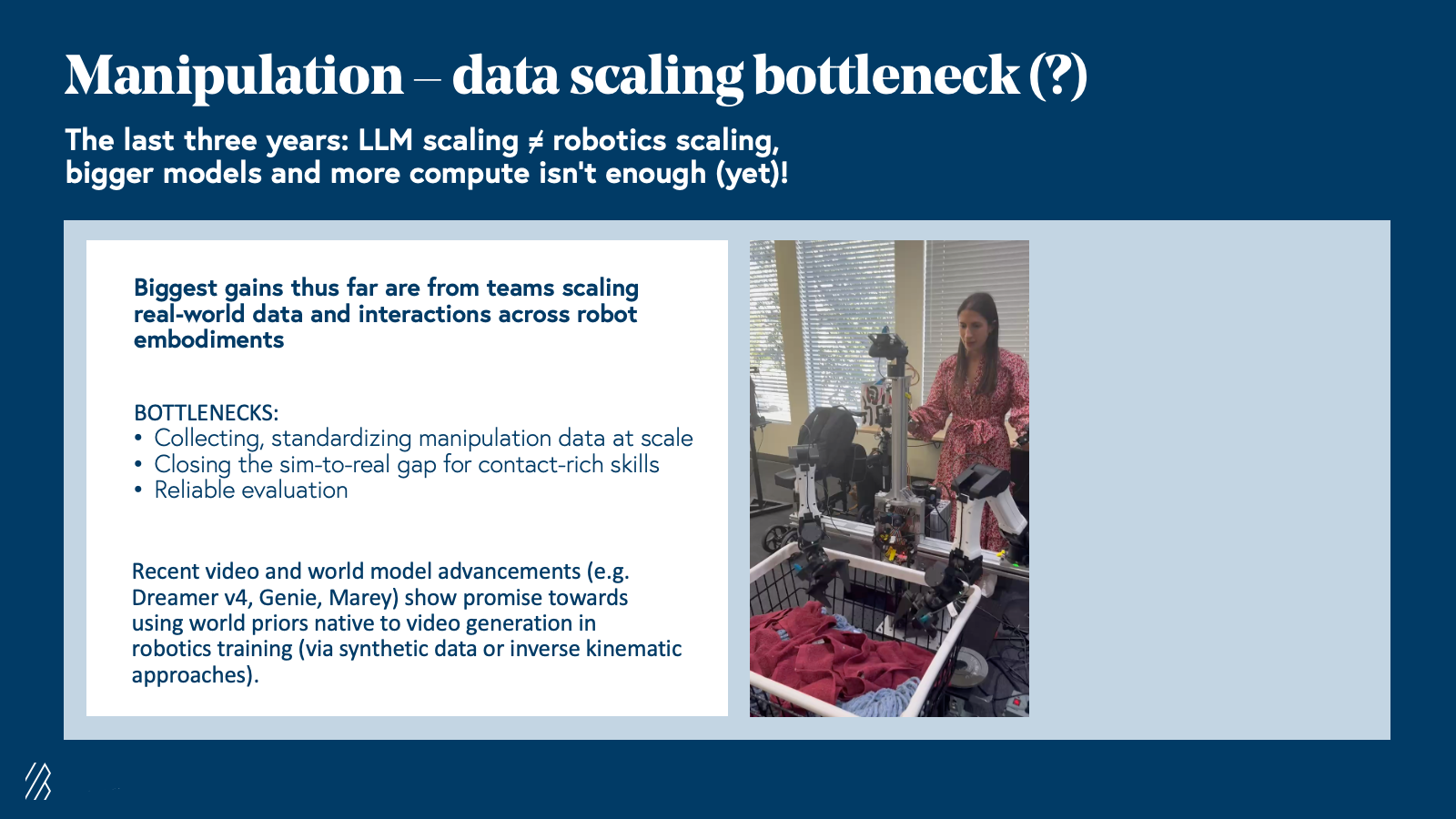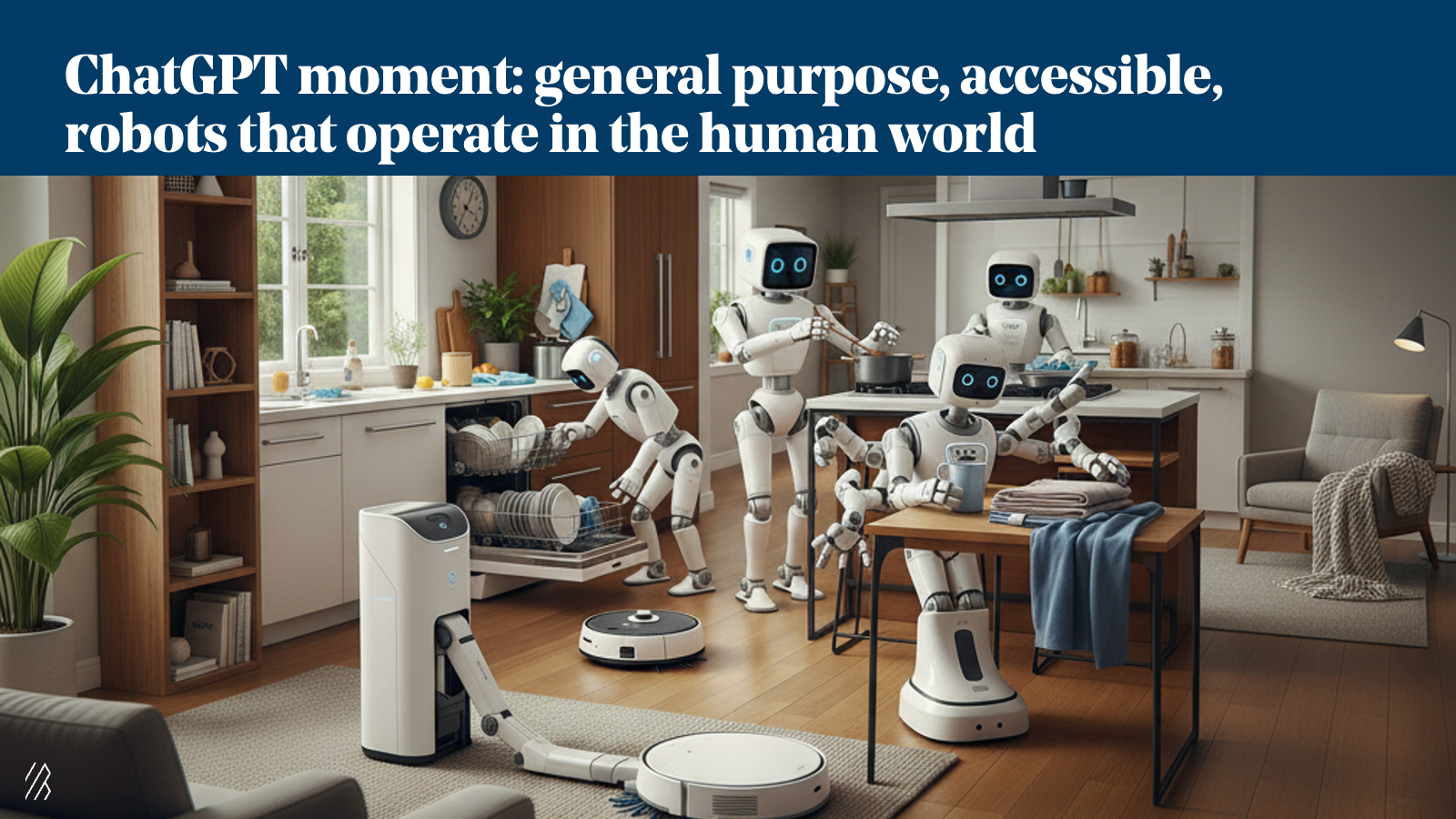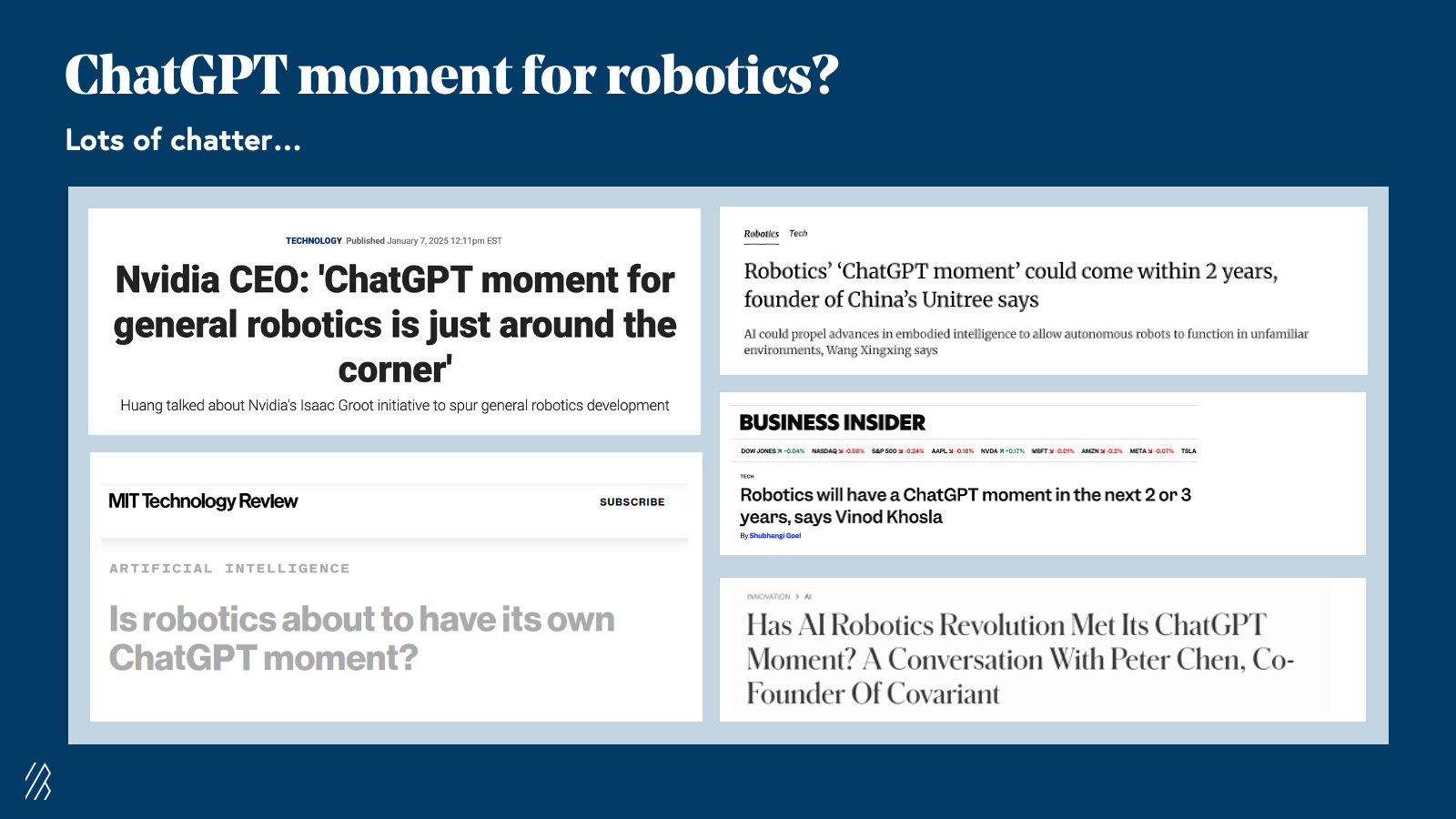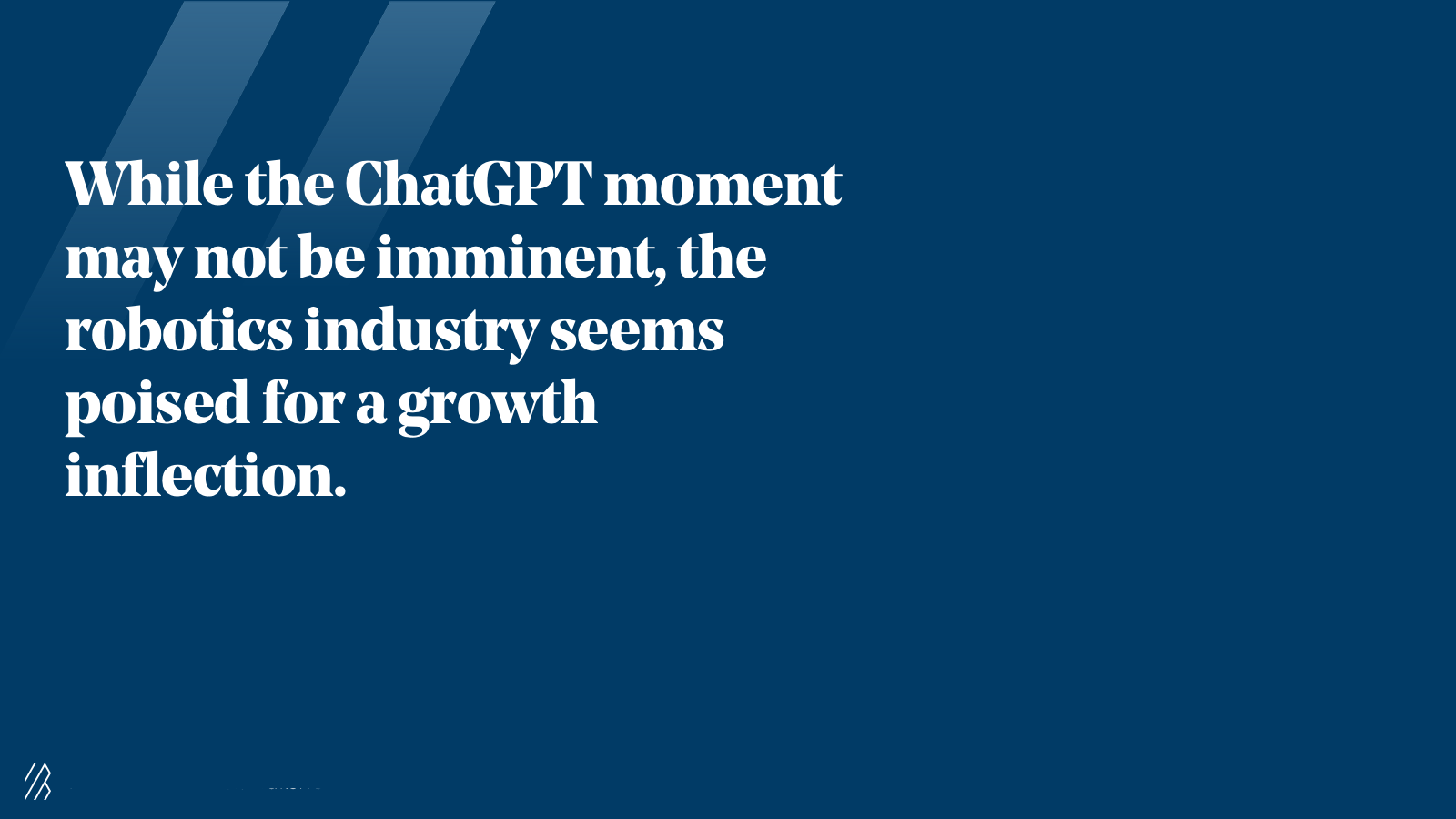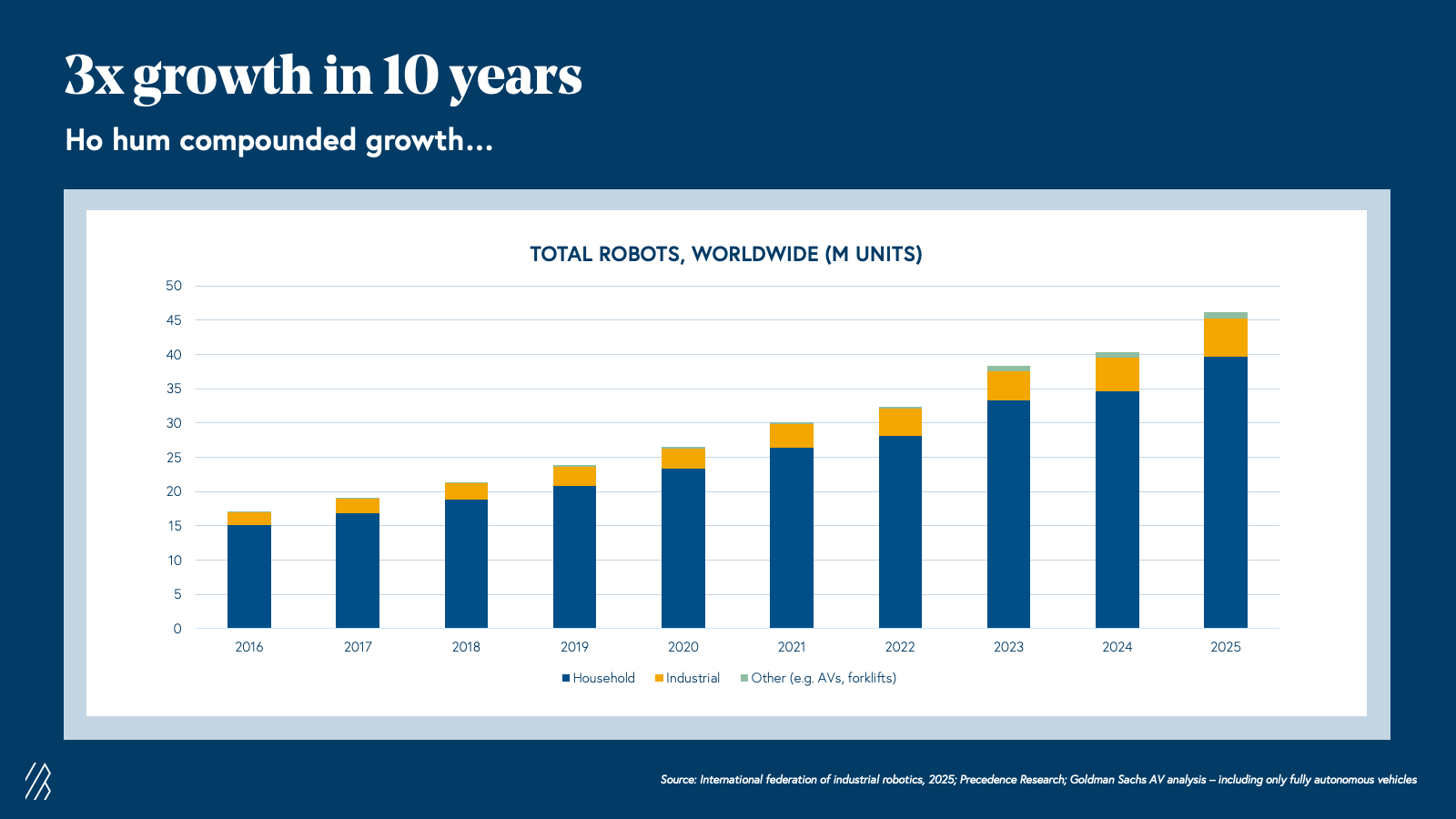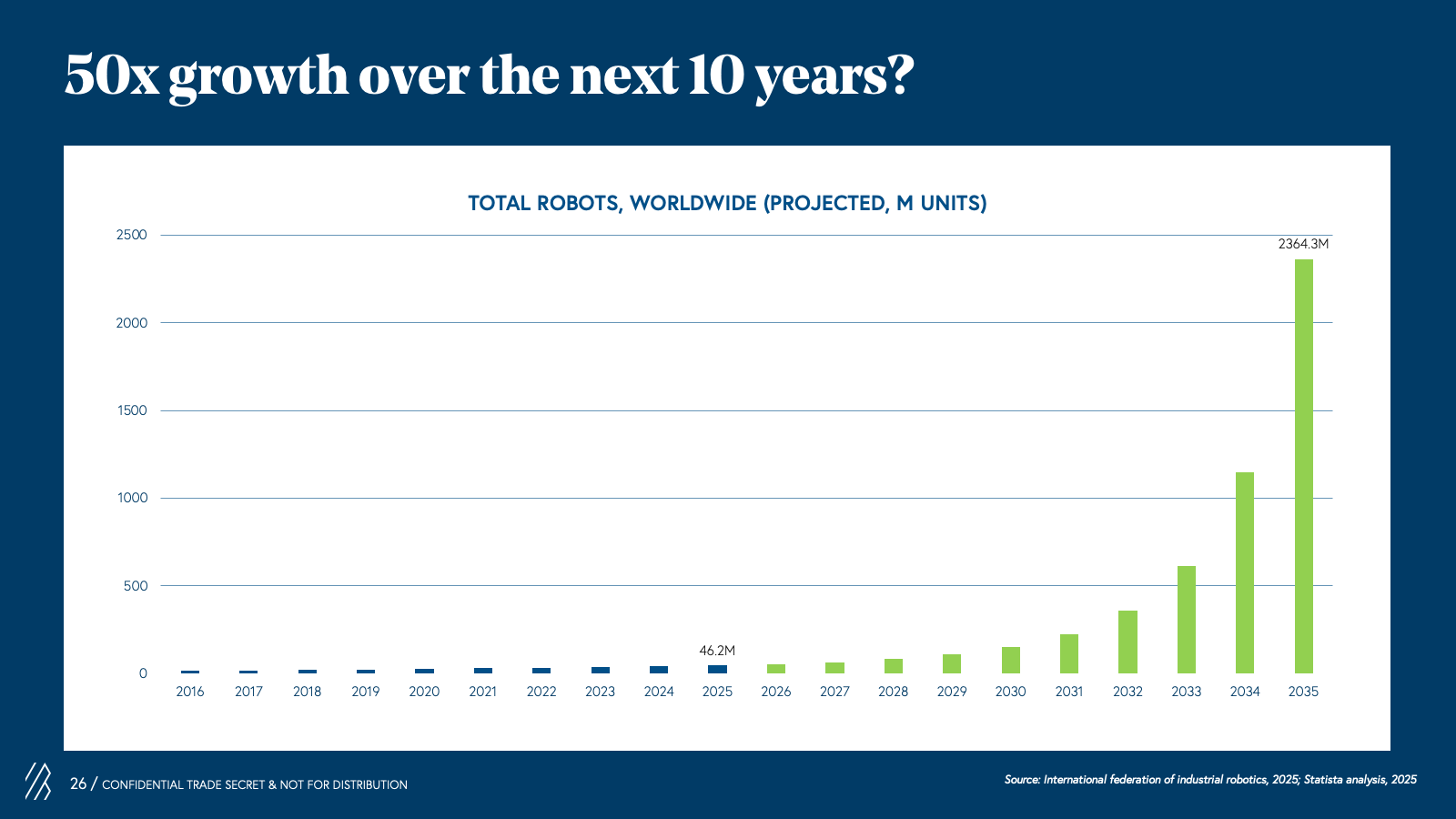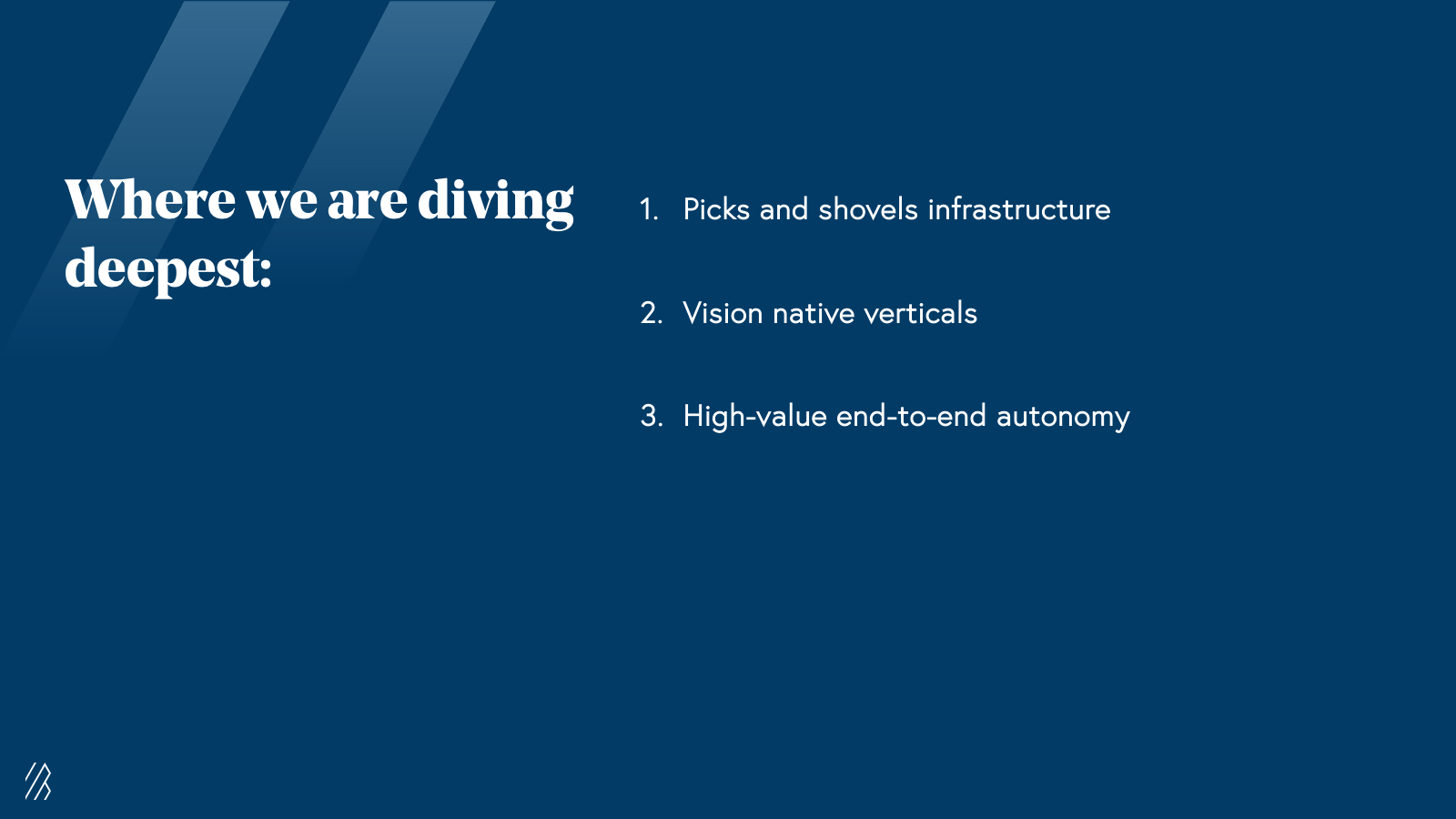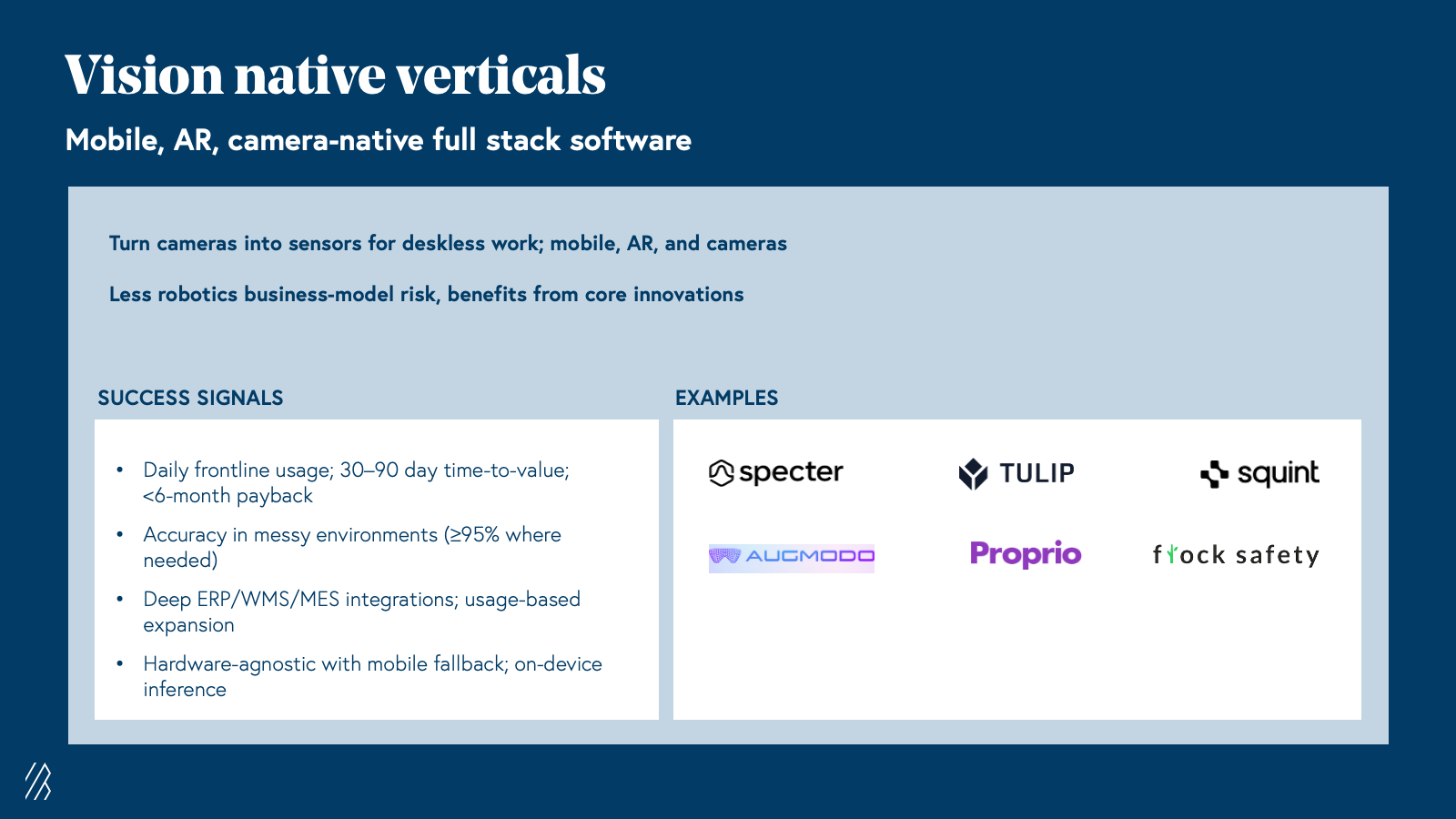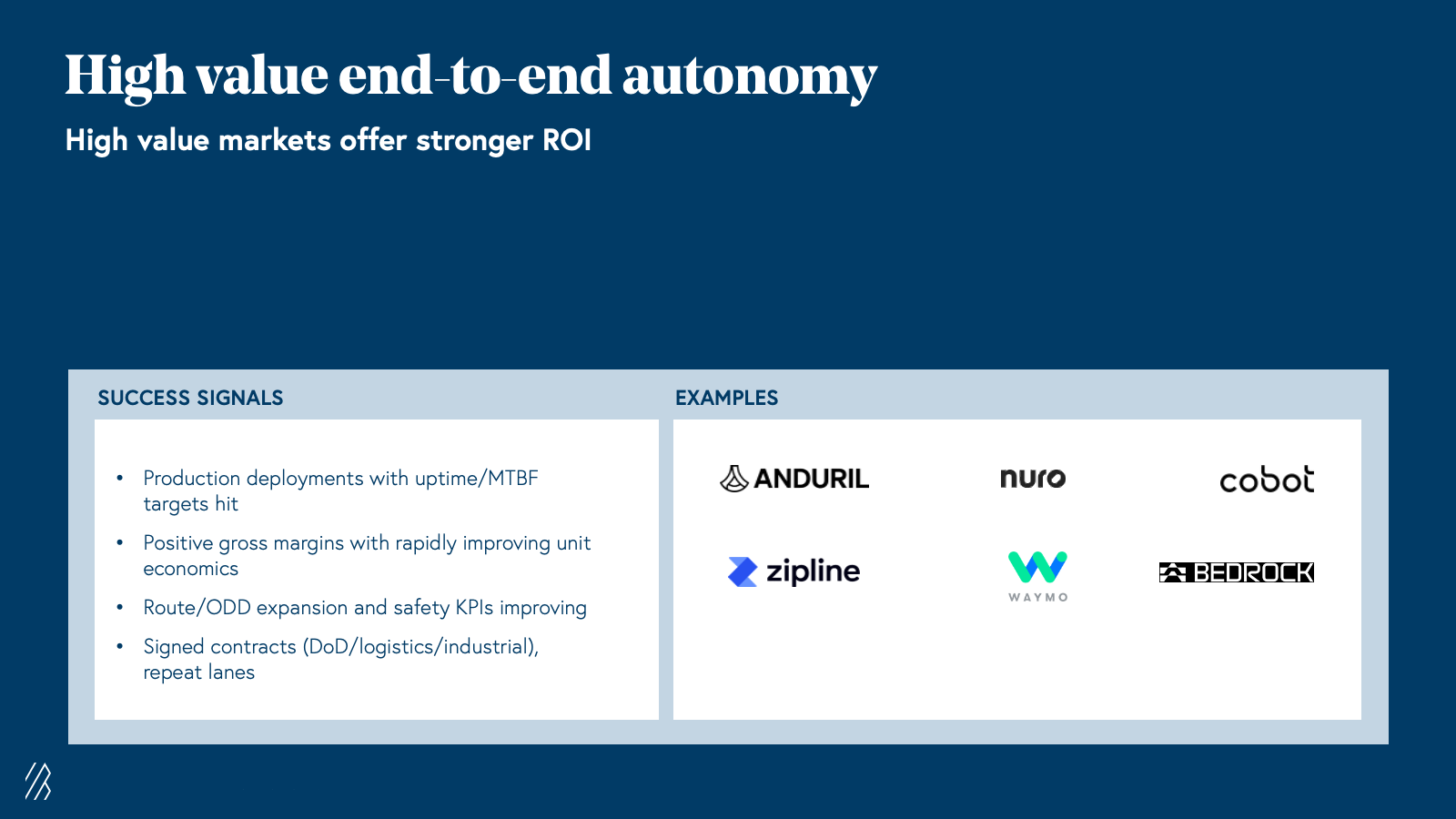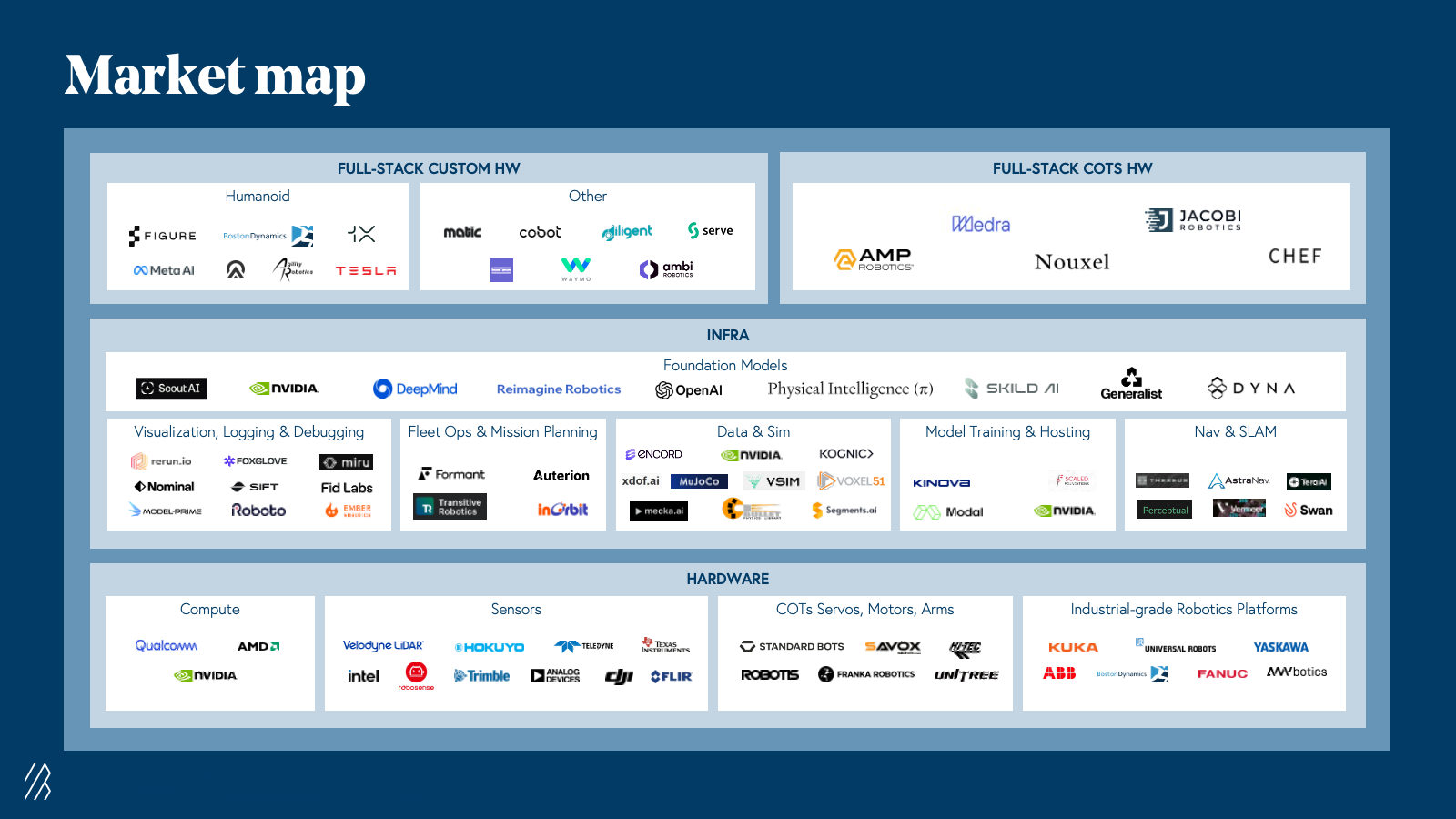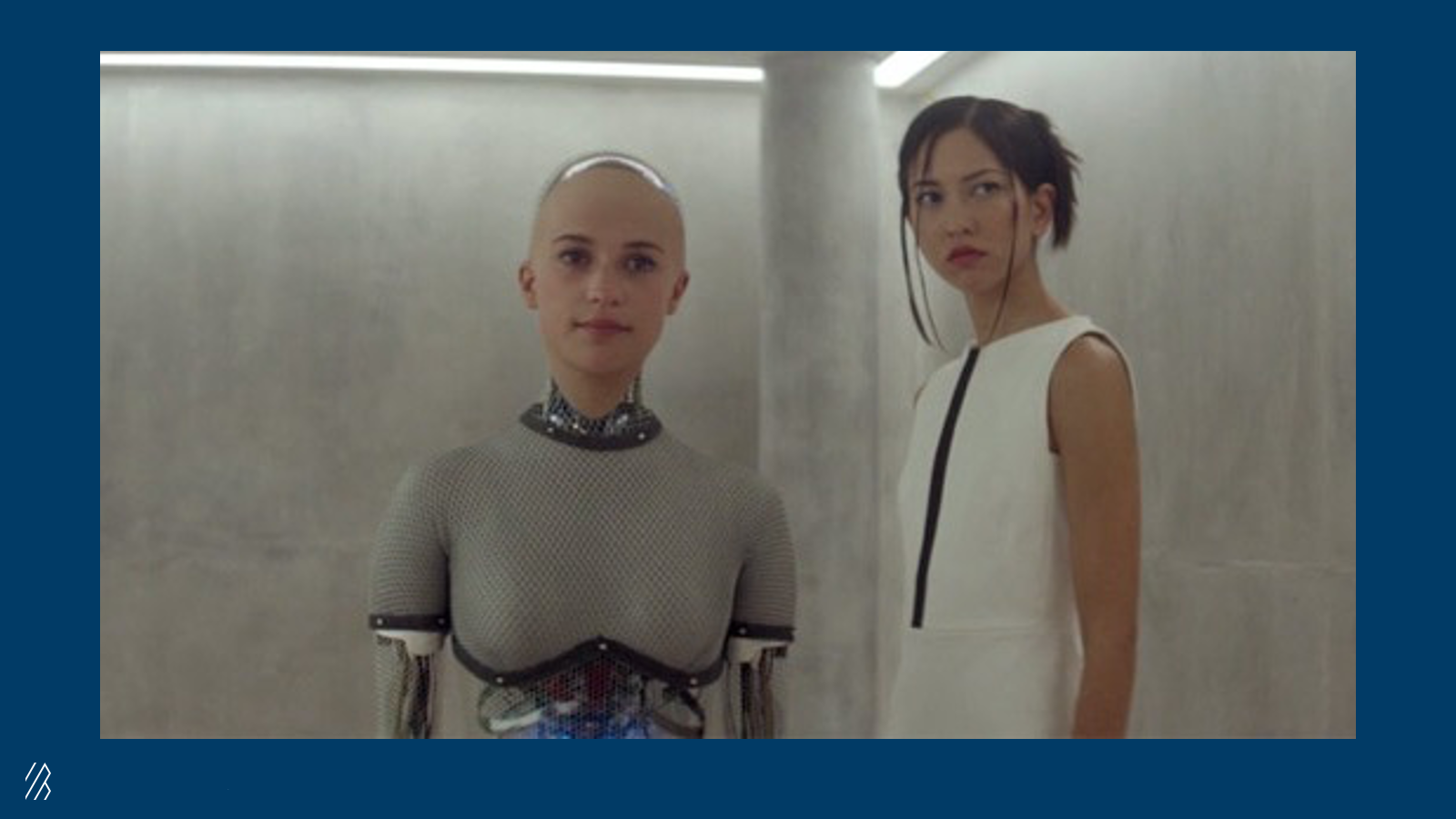Intelligent robotics: The new era of physical AI
How robotics, edge computing, and AI are transforming physical automation — and the investment opportunities we see ahead.
Physical AI is entering the innovation spotlight, moving AI beyond digital confines and into the real world of robotics and automation. Over the last year, top-level AI talent has significantly increased its focus toward “physical AI,” driving dramatic innovation in how machines interact with and shape our environment.
This presentation shares Bessemer’s internal exploration of emerging trends and tailwinds in robotics and physical AI, now made public to highlight why this area excites us and where we see compelling investment opportunities developing. Historically, investing in robotics has been challenging — the category has required significant capital, and commercialization and innovation cycles in deep tech are longer in comparison to SaaS markets. But rapid advances in edge computing, commoditized hardware, and powerful AI models are creating real disruptive possibilities and potentially rewriting the playbook for robotics investment.
The following slideshow walks through our findings, including the accelerating research pace, talent migration from leading AI labs into robotics startups, and breakthroughs in hardware and compute. All of these findings and more are contributing to what could be a turning point for physical AI.
We welcome discussion on these dynamics and look forward to engaging with those who share our curiosity about this pivotal chapter in automation and robotics. Reach out to Talia Goldberg (talia@bvp.com), Alexandra Sukin (asukin@bvp.com), and Bhavik Nagda (bnagda@bvp.com) to connect.
Full slide deck
Key insights on intelligent robotics
- Top AI talent is leaving large labs for startups, mirroring trends in breakthrough LLMs, signaling major shifts and innovation in robotics.
- Academic and commercial research in robotics is accelerating rapidly, with a tenfold increase in published papers since 2020 — 2024 alone saw more robotics research than the entire decade of the 2000s.
- Hardware improvements and commodization are enabling cross-embodiment, making it easier and cheaper to build scalable, versatile robots for various applications.
- Advances in edge computing, particularly platforms like NVIDIA’s Jetson, enable powerful AI workloads at much lower cost, supporting models with billions of parameters on a single device outside data centers.
- AI systems are moving from text-only to multimodal understanding, with self-supervised models like Meta’s DINOv3 marking a leap in visual reasoning and performance over traditional computer vision methods.
- Global labor shortages and demographic trends across the US, Europe, Japan, and China are driving demand for robotics to augment and replace human labor.
- A “ChatGPT” moment for robotics is still a few years away, but pragmatic applications are generating meaningful returns now.
- Breakthroughs in “sim-to-real” transfer for locomotion tasks relied on reinforcement learning and simulation, but manipulation tasks face bigger challenges due to complex real-world dynamics.
- Scalability in robotics hinges on collecting diverse, real-world demonstration data — currently costly and limited, prompting industry efforts to sell or aggregate such data for broader use cases.
- High-value, end-to-end autonomy in constrained domains (like surgical robots and self-driving cars) demonstrates superior results compared to human operation in certain niches.
- The emerging robotics ecosystem comprises commoditized hardware, democratized AI capabilities through foundation models, and critical infrastructure layers such as logging, simulation, and visualization platforms to support development.





